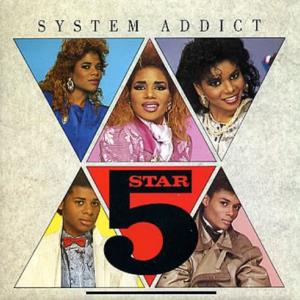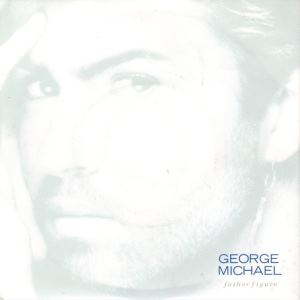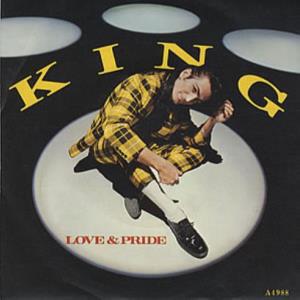 Every periodical in the British music press in the 1980s asked its audience what they thought about the artists working in the industry and the records they produced. There were the occasional “best ever” surveys (best album of all time, best band of the decade), but the most common, most anticipated lists were those compiled in the annual readers’ polls. A form was printed that people completed and posted in, usually towards the end of the year, and the results would be announced a few months later. Smash Hits turned theirs into an annual televised event, ‘The Smash Hits Poll Winners’ Party’, first broadcast in 1988. For the most part, the weekly (and fortnightly, in the case of Smash Hits) music press published lists of the Top 10 in each category they asked people to vote on, the typical awards contested being best single, best album, best video, etc. These Top 10 lists were often startling different: the readers’ interests (and the title’s editorial policy) was usually very evident from the acts who appeared in the year-end results for each journal. For example, take a look at the ‘best band/group’ category for 1989 and see who made the Top 10 in New Musical Express, Record Mirror and Smash Hits:
Every periodical in the British music press in the 1980s asked its audience what they thought about the artists working in the industry and the records they produced. There were the occasional “best ever” surveys (best album of all time, best band of the decade), but the most common, most anticipated lists were those compiled in the annual readers’ polls. A form was printed that people completed and posted in, usually towards the end of the year, and the results would be announced a few months later. Smash Hits turned theirs into an annual televised event, ‘The Smash Hits Poll Winners’ Party’, first broadcast in 1988. For the most part, the weekly (and fortnightly, in the case of Smash Hits) music press published lists of the Top 10 in each category they asked people to vote on, the typical awards contested being best single, best album, best video, etc. These Top 10 lists were often startling different: the readers’ interests (and the title’s editorial policy) was usually very evident from the acts who appeared in the year-end results for each journal. For example, take a look at the ‘best band/group’ category for 1989 and see who made the Top 10 in New Musical Express, Record Mirror and Smash Hits:
| New Musical Express | Record Mirror | Smash Hits | |
|---|---|---|---|
| 1 | The Stone Roses | Pet Shop Boys | Bros |
| 2 | Happy Mondays | Erasure | Pet Shop Boys |
| 3 | The Wedding Present | Soul II Soul | Wet Wet Wet |
| 4 | New Order | De La Soul | Big Fun |
| 5 | The Wonder Stuff | Deacon Blue | Brother Beyond |
| 6 | Pixies | =6 Beautiful South | Erasure |
| 7 | REM | =6 Guns N’ Roses | Deacon Blue |
| 8 | The Cure | =8 Simple Minds | Bananarama |
| 9 | Inspiral Carpets | =8 Simply Red | Bangles |
| 10 | James | Eurythmics | Simply Red |
As can be seen, the worthy, achingly credible (and often pretentious) NME’s Top 10 comprised, almost exclusively, ‘indie’ acts. This was the paper that also asked its readers to name best drummer, guitarist and so on, because it was a serious read for serious music fans, who knew bands’ musicians and not just the singers. On the other extreme was Smash Hits, full of chart-friendly, camera-ready names. It’s not by chance that none of the acts on the Smash Hits list appears on the NME one, as these two titles were catering for entirely different audiences. Record Mirror bridged the gap a little. Four of its winners also appear on the Smash Hits results, and although in 1989 the poll shared no artists with the NME one, this wasn’t always the case – New Order, for example, were often common to both in other years. But there are also some unusual names on the Record Mirror list that would never turn up on either NME or Smash Hits polls, such as De La Soul – this indicative of the magazine’s specialist coverage of soul, R&B, dance and hip-hop acts.
With such widely diverging views, which was the best band of the decade then? Who was the singer most favoured by fans of 80s pop? As the three titles already mentioned covered the broadest spectrum of musical taste, If You Were There below presents below the ‘poll of polls’, having reviewed the results for each year of the 1980s1. Ten points have been given to the winning act in each title’s survey each year, going down to one point for coming tenth.2 Then all the points each act3 collected throughout the decade have been summed to provide the following Top 10s. Although this system naturally favours those who were around for the whole decade, universal popularity across all three journals is in fact more important. For example, The Jam are fourth best band overall despite splitting up in 1982, as they appeared in the Top 10 in all three readers’ polls for each of the three years they were active.
| Best group | Best male singer | Best female singer | |
|---|---|---|---|
| 1 | U2 | Morrissey | Kate Bush |
| 2 | The Smiths | Prince | Siouxsie Sioux |
| 3 | Duran Duran | David Bowie | Madonna |
| 4 | The Jam | Paul Weller | Annie Lennox |
| 5 | Pet Shops Boys | George Michael | Alison Moyet |
| 6 | New Order | Bono Vox | Kim Wilde |
| 7 | Wham! | Simon Le Bon | Toyah Willcox |
| 8 | The Police | Paul Young | Liz Fraser |
| 9 | The Fall | =9 Gary Numan | Whitney Houston |
| 10 | Culture Club | =9 Elvis Costello | Sade Adu |
1 Record Mirror did not poll its readers in 1983.
2 From 1988, NME merged the ‘best male singer’ and ‘best female singer’ categories and replaced them with unisex ‘best solo’ artist. I have awarded 10 points to the first man on the list through to 5 for the sixth, and 10 points to the first woman through to 7 for the fourth, in both years.
3 96 different groups appeared in the year-end results across the decade for the three journals surveyed, along with 76 male and 75 female singers. (It should be noted that Boy George featured in both male and female results tables in some years.)
NEW SINGLES on sale from Dec. 31
No release scheduled for this date.



 Cranna contributed to Smash Hits in one form or another throughout the 1980s, becoming one of its longest-serving writers. His first credited contribution was in the 22 March 1979 issue; by 26 July he was Assistant Editor before taking over from Logan as Editor from the 18 October edition (incidentally the same issue in which the official address for the magazine changed to 52-55 Carnaby Street, where it would remain throughout the 1980s). He studied at St Andrews and Edinburgh universities before deciding on a career in journalism. Smash Hits was one of his earliest appointments, and after surrendering the editorship he worked on a range of other titles on a contract or freelance basis: proofreading and sub-editing, writing articles or reviews, and researching and fact-checking. All these skills were put to good use when he pulled together several editions of The Rock Yearbook in the mid-80s, and more recently when he ghost-wrote for Pete Burns’ autobiography Freak Unique in 2007.
Cranna contributed to Smash Hits in one form or another throughout the 1980s, becoming one of its longest-serving writers. His first credited contribution was in the 22 March 1979 issue; by 26 July he was Assistant Editor before taking over from Logan as Editor from the 18 October edition (incidentally the same issue in which the official address for the magazine changed to 52-55 Carnaby Street, where it would remain throughout the 1980s). He studied at St Andrews and Edinburgh universities before deciding on a career in journalism. Smash Hits was one of his earliest appointments, and after surrendering the editorship he worked on a range of other titles on a contract or freelance basis: proofreading and sub-editing, writing articles or reviews, and researching and fact-checking. All these skills were put to good use when he pulled together several editions of The Rock Yearbook in the mid-80s, and more recently when he ghost-wrote for Pete Burns’ autobiography Freak Unique in 2007. Hepworth was there pretty much from the beginning, receiving his first credit as a Contributor when Smash Hits’s first fortnightly edition was published. He had previously written for New Musical Express (whose offices were across the road from those of Smash Hits) and Sounds and had a dual career in the 1980s as a journalist and broadcaster. He joined the presenting team of the BBC’s ‘The Old Grey Whistle Test’ and was a co-anchor on the channel’s coverage of Live Aid. In the meantime, he was responsible for the launch of two other titles for EMAP, Just Seventeen (1983) and Q (1986). The former was sometimes described as a ‘sister’ paper to Smash Hits, so similar was its style. The key difference was that it was marketed exclusively to girls which it did through fashion coverage and agony-aunt columns/problem pages; beyond that, the same faces interviewed by Smash Hits made up the feature content. It remained in publication for 21 years. Q was an altogether different proposition, a perfect-bound monthly title ignoring the charts and focusing on album product. Read in conjunction with Smash Hits it gave a very good overview of what was happening in British popular music. Other high-quality monthly music (and general entertainment) periodicals he has launched include Mojo (1993-present) and The Word (2003-2012); at the other end of the market, but hugely popular, is the celebrity gossip mag Heat (founded 1999). He has formed his own publishing company Development Hell, won both the Editor and Writer of the Year awards from the Professional Publishers’ Association, and writes regularly for various magazines and newspapers. His book 1971 – Never A Dull Moment: The Year That Rock Exploded will be published on 7 April next year.
Hepworth was there pretty much from the beginning, receiving his first credit as a Contributor when Smash Hits’s first fortnightly edition was published. He had previously written for New Musical Express (whose offices were across the road from those of Smash Hits) and Sounds and had a dual career in the 1980s as a journalist and broadcaster. He joined the presenting team of the BBC’s ‘The Old Grey Whistle Test’ and was a co-anchor on the channel’s coverage of Live Aid. In the meantime, he was responsible for the launch of two other titles for EMAP, Just Seventeen (1983) and Q (1986). The former was sometimes described as a ‘sister’ paper to Smash Hits, so similar was its style. The key difference was that it was marketed exclusively to girls which it did through fashion coverage and agony-aunt columns/problem pages; beyond that, the same faces interviewed by Smash Hits made up the feature content. It remained in publication for 21 years. Q was an altogether different proposition, a perfect-bound monthly title ignoring the charts and focusing on album product. Read in conjunction with Smash Hits it gave a very good overview of what was happening in British popular music. Other high-quality monthly music (and general entertainment) periodicals he has launched include Mojo (1993-present) and The Word (2003-2012); at the other end of the market, but hugely popular, is the celebrity gossip mag Heat (founded 1999). He has formed his own publishing company Development Hell, won both the Editor and Writer of the Year awards from the Professional Publishers’ Association, and writes regularly for various magazines and newspapers. His book 1971 – Never A Dull Moment: The Year That Rock Exploded will be published on 7 April next year. A close associate of Hepworth, Ellen’s career has followed a similar trajectory. He had early posts at New Musical Express, Record Mirror and Time Out before arriving at Smash Hits in 1980. Like Hepworth, he had a career outside journalism too, being a radio disc jockey (standing in for John Peel on Radio 1) and television host (‘Whistle Test’ etc). He was the launch editor of Q and co-founder of The Word. He was also Editor in Chief at EMAP. His memoir Rock Stars Stole My Life! is out now in paperback.
A close associate of Hepworth, Ellen’s career has followed a similar trajectory. He had early posts at New Musical Express, Record Mirror and Time Out before arriving at Smash Hits in 1980. Like Hepworth, he had a career outside journalism too, being a radio disc jockey (standing in for John Peel on Radio 1) and television host (‘Whistle Test’ etc). He was the launch editor of Q and co-founder of The Word. He was also Editor in Chief at EMAP. His memoir Rock Stars Stole My Life! is out now in paperback. Bush was the original designer at Smash Hits (credited in early issues as Ross George) and remained with the magazine until October 1986. “And so another era in the shifting tableau of publishing that is Smash Hits has come to a halt,” the Bitz column reported in the issue after his exit. “Blub! It’s almost too tragic but the diminutive genius clad in black, Steve Bush, i.e. the editor, has left the ranks of our esteemed magazine… oh, well, no use crying over it now. He’s gorn, GORN!! So as the petite führer shuffles through the glittering portals into Carnaby Street for the last time, Bitz hankily presents…Ode To Steve Bush. Dear dear dear Steve Bush/did you resign/or were you given the push? (haw haw)”. In fact he remained with EMAP to begin with (“he’s gone to think up new ‘projects’ for our publishers,” Bitz admitted), and became an entrepreneurial publisher, designing and editing a number of titles. A lasting legacy of Bush’s at Smash Hits was the logo he introduced with the issue of 28 August 1985, which would remain for nearly fifteen years. During his own time with the magazine he changed the logo every other year.
Bush was the original designer at Smash Hits (credited in early issues as Ross George) and remained with the magazine until October 1986. “And so another era in the shifting tableau of publishing that is Smash Hits has come to a halt,” the Bitz column reported in the issue after his exit. “Blub! It’s almost too tragic but the diminutive genius clad in black, Steve Bush, i.e. the editor, has left the ranks of our esteemed magazine… oh, well, no use crying over it now. He’s gorn, GORN!! So as the petite führer shuffles through the glittering portals into Carnaby Street for the last time, Bitz hankily presents…Ode To Steve Bush. Dear dear dear Steve Bush/did you resign/or were you given the push? (haw haw)”. In fact he remained with EMAP to begin with (“he’s gone to think up new ‘projects’ for our publishers,” Bitz admitted), and became an entrepreneurial publisher, designing and editing a number of titles. A lasting legacy of Bush’s at Smash Hits was the logo he introduced with the issue of 28 August 1985, which would remain for nearly fifteen years. During his own time with the magazine he changed the logo every other year. Born in Belfast in 1960, McIlheny worked on local newspapers before a stint in London at Melody Maker led to his appointment at Smash Hits as editor. He left in 1989 to become launch editor of Empire magazine, another EMAP title, eventually becoming the publisher’s Managing Director in 1994. He was the first editor of Heat when it was launched five years later. He is currently the CEO of the Professional Publishers Association.
Born in Belfast in 1960, McIlheny worked on local newspapers before a stint in London at Melody Maker led to his appointment at Smash Hits as editor. He left in 1989 to become launch editor of Empire magazine, another EMAP title, eventually becoming the publisher’s Managing Director in 1994. He was the first editor of Heat when it was launched five years later. He is currently the CEO of the Professional Publishers Association. Smash Hits cost
Smash Hits cost  It is usually described as “the coveted Christmas #1 spot” in the media, but why should it be so? Why the prestige of having the last chart-topping single of a year, more than, say, the first? A #1 at any time of the year is a good indication of an act’s current popularity, but the main reason seems to be simply cold, hard cash: more records are sold in the run-up to Christmas than at any other time of the year, so a #1 then is can genuinely be called one of the biggest hits of the year.
It is usually described as “the coveted Christmas #1 spot” in the media, but why should it be so? Why the prestige of having the last chart-topping single of a year, more than, say, the first? A #1 at any time of the year is a good indication of an act’s current popularity, but the main reason seems to be simply cold, hard cash: more records are sold in the run-up to Christmas than at any other time of the year, so a #1 then is can genuinely be called one of the biggest hits of the year. 